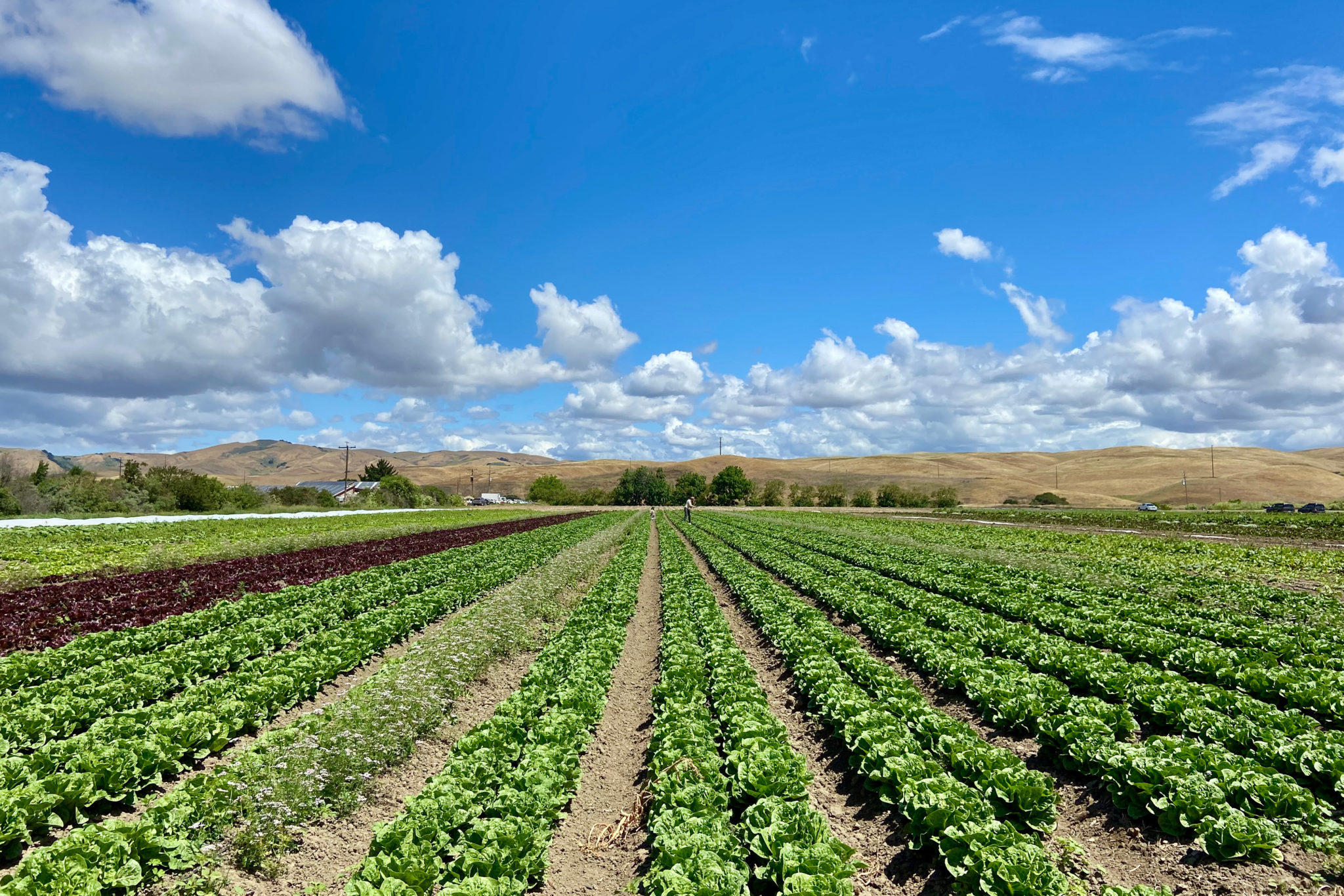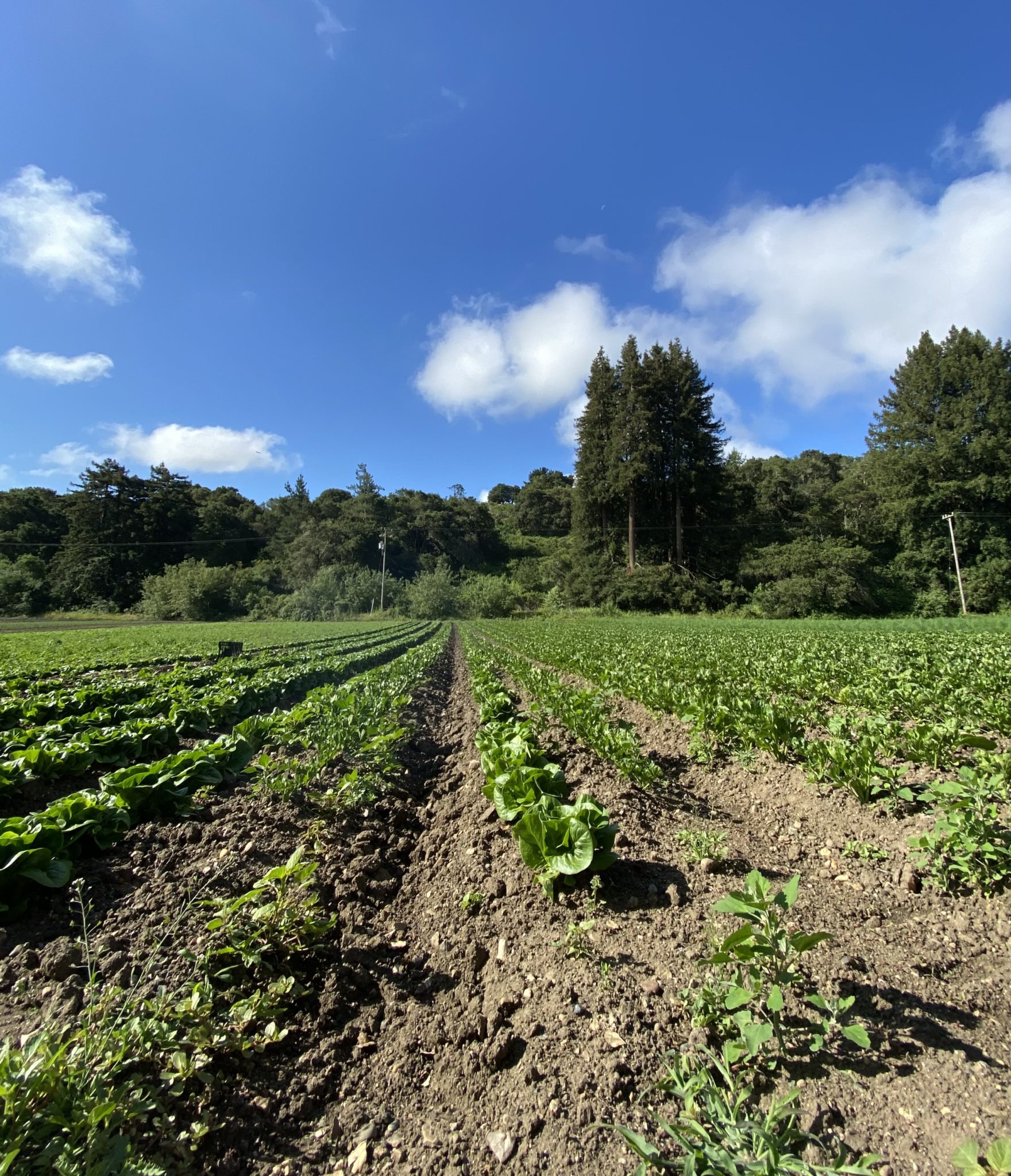From the Field
Diversified Farming Hits Hurdles in California’s Central Coast
The Central Coast is a crucial region for organic agriculture. Even here, farmers face persistent barriers to adopting diversified farming practices.

If you’re a fan of organic leafy greens, you can thank California’s Central Coast. Roughly 70 percent of US lettuce comes from this region. Salinas Valley, in particular, grows most of it, which is why some people call this valley the nation’s Salad Bowl.
“Organic” is also woven into the fabric of this region’s lettuce industry. Starting in the 1960s, farmers and scholars in Santa Cruz formed one of the first US organic certification organizations, California Certified Organic Farmers, and kickstarted a US organic industry that last year boasted $61.9 billion in sales. This movement also supported the first agroecology program at an American university at UC Santa Cruz, where farmers could research and disseminate diversification practices like cover cropping, hedgerow planting, composting, and rotating crops.
But even here, farmers face several systemic and persistent barriers – including land tenure and supply chain pressures – to adopting these diversified farming practices. In a new paper published in Agroecology and Sustainable Food Systems, researchers, including current affiliates and alum of BFI’s Center for Diversified Farming Systems (CDFS), conducted interviews with organic lettuce farmers and technical assistant providers in the Central Coast region, and identified some of those specific barriers.
“Access to land is one huge issue, especially for smaller-scale or beginning farmers who want to work the land with an ethos of stewarding it and following a less extractive form of agriculture,” says Kenzo Esquivel, a co-lead on the paper and PhD student of agroecology in UC Berkeley’s Department of Environmental Science, Policy, and Management (ESPM). Short-term leases can also disincentivize diversification. Cover cropping and crop rotation, for instance, “don’t improve soils in a season or even a year,” says Esquivel. “Some farmers might not see those costs recouped for four or five years. When you’re on a one-year lease, that’s a hard sell.”

Noncrop vegetation provides habitat for wildlife but is often removed, according to stringent food safety standards. Photos provided by Kenzo Esquivel
Other barriers come through supply chain pressures, such as stringent food safety standards decided by buyers. In 2006, a deadly outbreak of E. coli was traced back to bagged spinach grown in California’s Central Coast. No definitive cause for the outbreak was ever identified, according to research by Daniel Karp, an associate professor of biology at UC Davis and a former postdoc at ESPM, but the blame fell on wildlife, particularly birds who roosted in vegetation adjacent to farms. To reduce food safety risks, farmers started feeling pressure to clear out this vegetation – eliminating large swaths of wildlife habitat in the process.
Not only is this practice at odds with organic certification by the USDA that stipulates that organic farmers “maintain or improve” biodiversity on farms, it also isn’t backed by science. In fact, Karp’s lab at UC Davis has been gathering evidence in the Central Coast that maintaining bird habitat could actually “mitigate food-safety risks and decrease crop damage from birds,” contrary to current buyer mandates. More research in this area is forthcoming.
Of course, there’s no silver bullet to addressing these persistent barriers. Other recent papers from this team discuss the “sweet spot” for diversified farmers, which Esquivel describes as the right combination of individual and structural factors that enable farmers to adopt diversified farming practices and maintain them with sustainability.
But this recent paper also discusses a range of both farm level innovations and policy changes, ranging from state-level policy on farmland acquisition, to science-based food safety standards, to farmer-to-farmer training, to state support for climate smart farming through programs like California’s Healthy Soils Program. “Solving these barriers will take some strategic and creative thinking from policymakers,” says Esquivel, “while also supporting farmers on the ground.”
Liz Carlisle, co-lead with Esquivel, an assistant professor of environmental studies at UC Santa Barbara, and BFI alum, sees a throughline from some of these local discussions to next year’s Farm Bill. “One of the most interesting insights that emerged from this project is that diversifying farms requires policy action at all levels,” she says. “The 2023 Farm Bill is the most high profile vehicle for such policies, and we’ve identified a number of specific opportunities we see there.”
The paper was supported by a Coupled Natural and Human Systems grant from the National Science Foundation awarded to Timothy Bowles, BFI’s co-associate faculty director, and a team that includes BFI founding co-faculty directors Alastair Iles and Claire Kremen, and a roster of soil scientists, social scientists, wildlife biologists, and policy experts associated with CDFS. Nina F. Ichikawa, BFI’s executive director, is listed as a coauthor for providing policy expertise.
Learn more about diversified farming and its barriers in California
- Esquivel et al. “The “Sweet Spot” in the Middle: Why Do Mid-Scale Farms Adopt Diversification Practices at Higher Rates?” Frontiers in Sustainable Food Systems, 2021. https://doi.org/10.3389/fsufs.2021.734088
- Chapman et al. “Social-ecological feedbacks drive tipping points in farming system diversification.” One Earth, 2022. https://doi.org/10.1016/j.oneear.2022.02.007
- The Organic Center recently held a webinar Tools Organic Farmers Need to Meet Food Safety Requirements to help organic farmers navigate food safety risks and third-party certification. The webinar was accompanied by a list of relevant publications, including recent research from the Central Coast team led by Karp on birds and food safety.